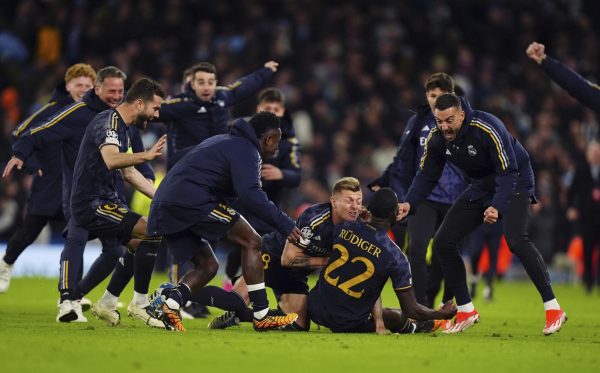The Black-and-Blue Beauty of the NHL’s Divisional Realignment
Let me be clear: the changes brought about by the pandemic and their impact on the 2021 National Hockey League (NHL) season are mostly negative. Though sports fans across the country and around the world have become accustomed to it, empty arenas and artificial crowd noise are a stark reminder of the times we are all living in. Gone are the days of a packed Nassau Coliseum or Madison Square Garden full of loud New Yorkers for a Rangers-Islanders showdown, or a sold-out and electric Bell Center in the Mecca of hockey for a tilt between the Canadiens and Bruins. Furthermore, the virus has and will continue to present challenges for teams during this abbreviated season. Teams such as the Buffalo Sabres and New Jersey Devils have had players and coaches test positive, putting their seasons on hold, while star players like Alexander Ovechkin and Evgeny Kuznetsov have had to miss games for violating protocol.
However, with the various changes implemented for this 56-game campaign, one stands out in a positive light: the new divisional alignments. The league altered the compositions of the four divisions this season to cut down on travel, and geographically put teams in divisions that made the most sense. Teams only play the other teams within their own division, and the top four teams in each division make the playoffs.
While this realignment only took place because of the virus, it has made for some absolutely electric hockey. Teams within the same division play against each other eight to ten times, and to minimize travel, they often play consecutive matchups. This alteration to the schedule has resulted in some bad blood on the ice, and the re-ignition of several rivalries. At the end of a Rangers and Washington Capitals game last week that was filled with scrums between the whistles and crunching hits, Rangers grinder Brendan Lemieux was at the center of an altercation that resulted in multiple fights after the final whistle was blown. One of the four divisions this season is made up of only Canadian teams, adding extra fuel to the fiery rivalries up north, including the Battle of Alberta between the Calgary Flames and Edmonton Oilers. Matchups across the league have simply been more intense, with players knowing they will see their foes just a few days after their first battles. Many hockey fans have been pleased to see fighting gradually leaving the game over recent seasons, and while fighting itself may be a side effect of the new schedule, the main product has been more fiery competition overall.
Teams across the league have a legitimate reason to play a more intense game night in and night out: each game matters more this season than it has before. Essentially, every game is worth four points; if your team loses, not only does it not get two crucial points in the standings, but the team that beat them gets to move up two points in that same division. On top of this, the season has been reduced from 82 games to the aforementioned 56, making each contest even more valuable. Teams in contested divisions simply can’t afford to lose too many games, and they sure are playing like it.
As the rivalries intensify and the division standings continue to take shape, the competitive nature of the new NHL divisions should only bring better hockey to fans across the world during a season in COVID-19. Arenas around the league remain empty, but teams are playing with a newfound energy that is captivating the hockey world.

Aaron Silverstein is a senior from Princeton, NJ concentrating in English with a creative writing emphasis and minoring in philosophy. He has previously...










